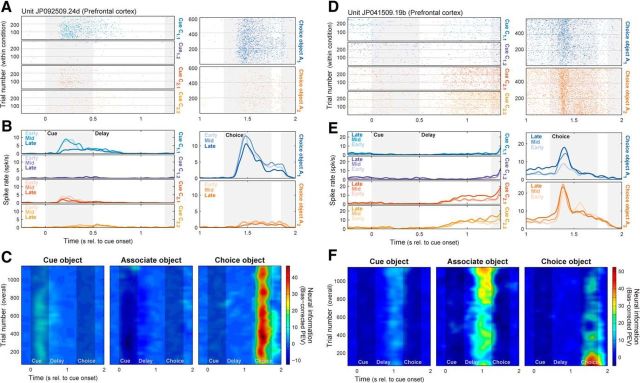Figure 3.
Basic spiking results could be observed in individual PFC neurons. A–C, PFC neuron with decreasing neural information about cue and choice objects with learning. A, Spike rasters across all trials for each of four cue (left) and two choice (right) objects. Horizontal gray lines indicate divisions between early, middle, and late learning stages. B, Spike densities for same cue (left) and choice (right) objects. Light-to-dark colors correspond to successive learning stages (early, middle, and late). With learning, responses to the preferred cue (blue) and choice (blue) objects diminish. C, Information conveyed (PEV) in this neuron's spiking rate about cue (left), associate (middle), and choice (right) objects. Cue and choice object information both decrease with learning. D–F, PFC neuron with learning-related decrease in choice object and increase in associate object information. D, Spike rasters. E, Spike densities. With learning, responses increase in the delay period when the preferred associate object is cued (red, yellow), and in the choice period when the nonpreferred choice object is shown (blue). F, Neural information (PEV). With learning, delay-period associate information increases, while choice-period choice object information decreases.

